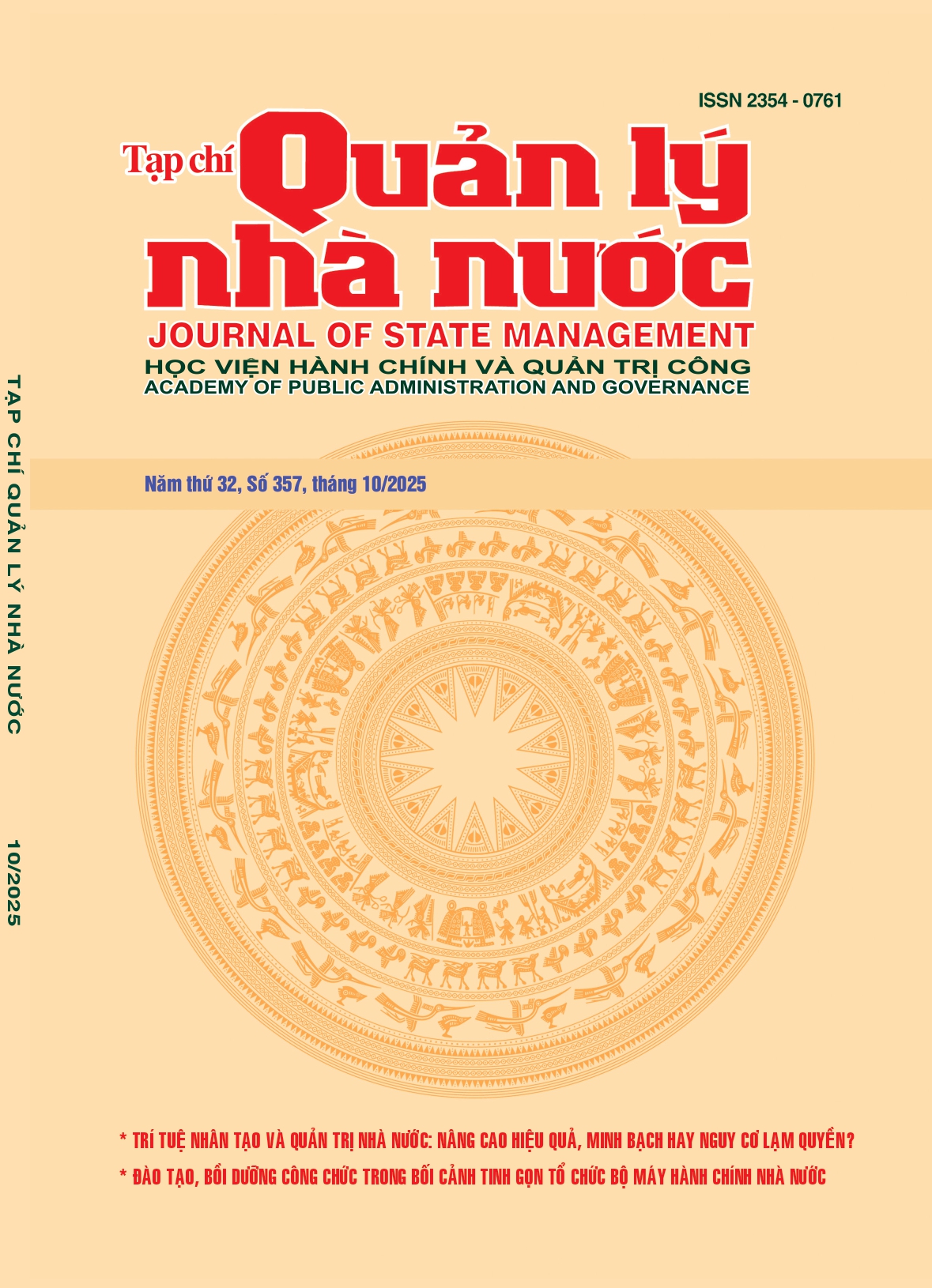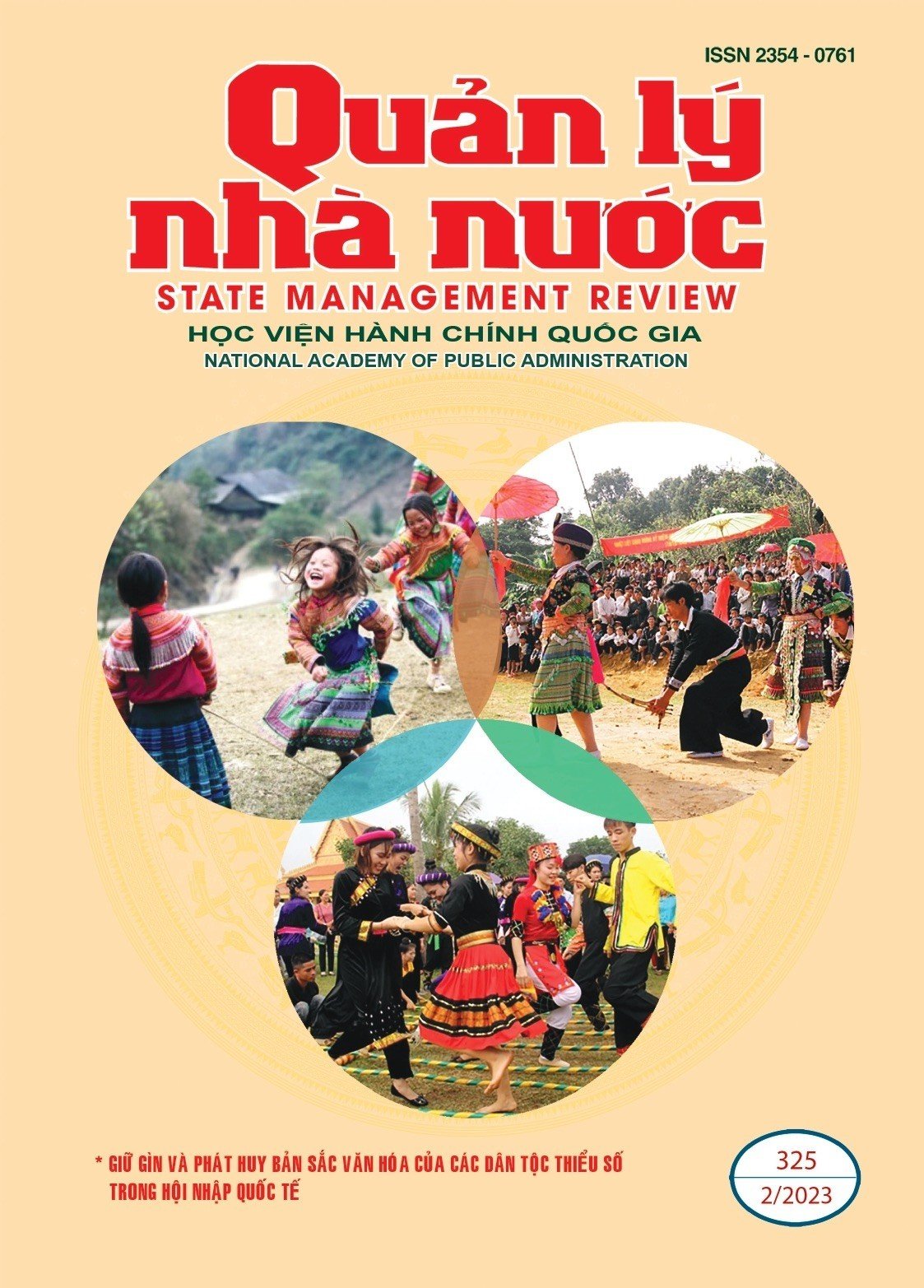Trí tuệ nhân tạo và quản trị nhà nước: nâng cao hiệu quả, minh bạch hay nguy cơ lạm quyền?
DOI:
https://doi.org/10.59394/qlnn.357.2025.1306Từ khóa:
Trí tuệ nhân tạo, quản trị nhà nước, hiệu quả, minh bạch, lạm quyềnTóm tắt
Trí tuệ nhân tạo (AI) đang tác động sâu rộng đến quản trị công, hứa hẹn nâng cao hiệu quả, minh bạch hóa quy trình và cải thiện chất lượng ra quyết định chính sách, tăng cường khả năng phản ứng trong khủng hoảng và minh bạch hóa thông tin cho công dân. Tuy nhiên, bên cạnh các lợi ích, AI cũng mang đến các rủi ro tiềm ẩn. Bài viết xây dựng trên khung lý thuyết về quản trị công tốt và đạo đức công nghệ, kết hợp với phân tích tình huống quốc tế và Việt Nam để đánh giá cả cơ hội cũng như thách thức của AI trong quản trị nhà nước. Từ đó, đề xuất một số chính sách: xây dựng khung pháp lý toàn diện, thành lập tổ chức giám sát độc lập, ban hành chuẩn mực đạo đức công nghệ, nâng cao năng lực số của công chức, người dân và bảo đảm minh bạch, trách nhiệm giải trình.
Tài liệu tham khảo
Mišić, J., van Est, R., & Kool, L. (2025). Good governance of public sector AI: a combined value framework for good order and a good society. AI and Ethics.
Zuboff, S. (2019). The age of surveil- lance capitalism: The fight for a human future at the new frontier of power. PublicAffairs.
e-Estonia. (n.d.). X-Road: The Backbone of Estonia’s Interoperable Digital State. e-Estonia.
Government of UAE. (2021). Virtual assis- tant Rashid. https://u.ae/en/about-the-uae/dig- ital-uae/virtual-assistant-rashid.
Kraemer-Mbula, E., Wunsch-Vincent, S., & Zhou, Y. (Eds.). (2021). The role of artificial intel- ligence in innovation: Insights from Singapore’s Smart Nation initiative. World Intellectual Prop- erty Organization.
Whitelaw, S., Mamas, M. A., Topol, E., & Van Spall, H. G. C.(2020). Applications of digital technol- ogy in COVID-19 pandemic planning and response. The Lancet Digital Health, 2(8), e435–e440. https://doi.org/10.1016/S2589-7500(20)30142-4.
Kehl, D., & Kessler, S. (2017). Algorithms in the criminal justice system: Assessing the use of risk assessments in sentencing. Berkman Klein Center for Internet & Society.
Lee, J. (2020). Government use of arti- ficial intelligence in Korea: Current practices and policy implications. Journal of Open Innovation: Technology, Market, and Complexity, 6(4), 166. https://doi.org/10.3390/joitmc6040166.
European Commission. (2021). The role of artificial intelligence in the European Green Deal. Publications Office of the European Union. https://doi.org/10.2777/09127.
OECD. (2020). The use of AI to detect fraud in public spending. OECD Publishing.
Susha, I., Janssen, M., & Verhulst,
S. (2022). Data collaboratives as a new frontier of cross-sector partnerships in the era of AI: A critical review. Government Information Quarterly, 39(1), 101–124. https://doi.org/10.1016/j.giq.2021.101624.
O’Neil, C. (2016). Weapons of math de- struction: How big data increases inequality and threatens democracy. Crown Publishing Group.
Human Rights Watch. (2021). Moscow’s facial recognition system threatens rights. https://www.hrw.org/news/2021/05/21/mosco w-facial-recognition-system-threatens-rights.
Creemers, R.(2018). China’ssocialcreditsys- tem: Anevolvingpracticeofcontrol. SSRNElectronic Journal. https://doi.org/10.2139/ssrn.3175792.
Angwin, J., Larson, J., Mattu, S., & Kirch- ner, L. (2016, May 23). Machine bias: There’s software used across the country to predict fu- ture criminals. And it’s biased against Blacks. ProPublica. https://www.propublica.org/arti- cle/machine-bias-risk-assessments-in-criminal- sentencing.
Fussey, P.,& Murray, D.(2019). Independent report on the London Metropolitan Police Service’s trial of live facial recognition technology. University of Essex Human Rights Centre.
Helbing, D., Frey, B. S., Gigerenzer, G., Hafen, E., Hagner, M., Hofstetter, Y.,… & Zwitter,
A. (2019). Will democracy survive big data and ar- tificial intelligenceṢ Scientific American, 25(2), 1–5.
Isaak, J., & Hanna, M. J. (2018). User data privacy: Facebook, Cambridge Analytica, and privacy protection. Computer, 51(8), 56–59. https://doi.org/10.1109/MC.2018.3191268.
Việt Nam thiếu 200.000 nhân sự CNTT, 70% sinh viên ra trường chưa đủ năng lực https://nguoiduatin.vn/viet-nam-thieu-200000- nhan-su-cntt-70-sinh-vien-ra-truong-chua-du- nang-luc-204250210135002572.htm






